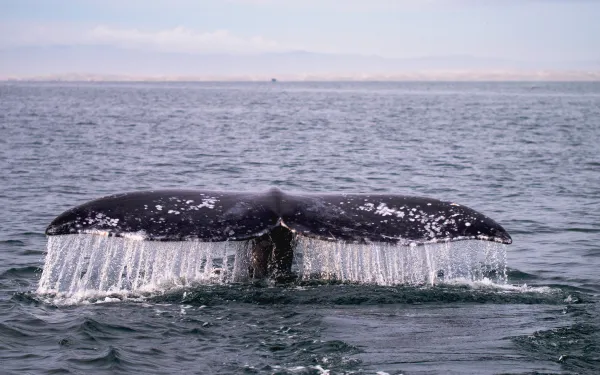
10 Things You Should Know About Don Diego
Basic information about the proposed underwater mining project in Mexico.
Read more
Basic information about the proposed underwater mining project in Mexico.
Read more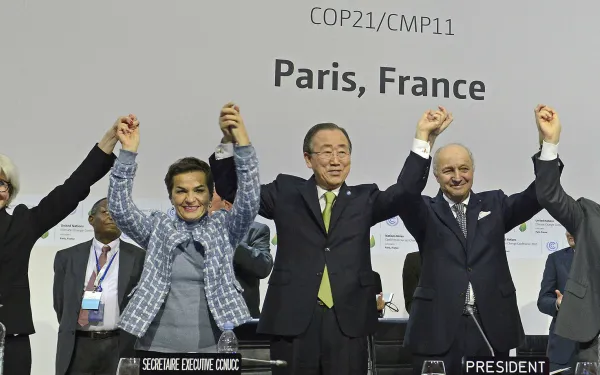
AIDA celebrates the first step toward the construction of a new planet.
Read more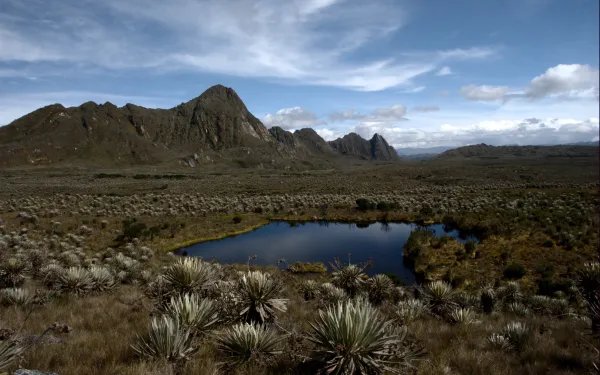
The new law that bans mining in Colombia’s páramos took years to materialize, and was the product of multiple activist campaigns, lawsuits, and pressure from civil society to preserve one of the world’s most sensitive ecosystems. Last month, Colombia’s Constitutional Court approved a law that has no precent. It bans mining and oil exploitation –effectively blocking 473 already-existing concessions– in the country’s páramos. The law is expected to impact more than 300 mining operations in 25 moorlands, according to data from the National Authority of Environmental Licenses (ANLA). One of those companies is the Canadian transnational, Eco Oro. Its Angostura mine is located within the Santurbán moorland, in the Norte de Santander and Santander departments, within an area larger than 142,000 hectares. Santurbán includes five regional parks and a variety of species in danger of extinction, such as the condor (Vultur gryphus), the chirriador (Cisttothorus apollinari), the moorland duck (Anas flavirostris) and the curí (Cavia porcellus). On its website, the company has announced that it is “developing a multi-million ounce gold-silver deposit in Colombia.” Eco Oro has already completed more than 350,000 meters of drilling and 3,000 meters of underground development, thanks to an investment by the International Financing Corporation of the World Bank. Juan Orduz, president of Eco Oro’s board of directors, said back in 2014 –before the law was approved– that the company “has invested more than 240 million dollars in the region.”“It’s no secret that we’ve had many challenges and that we will keep having them. There’s always a new source of conflict, and even then, we’re going to keep coming up with strategies to keep working in this area,” said Orduz back then, when the demarcations for mining in Colombia’s páramos were an issue of conflict. In a recent press release, Eco Oro announced that it has the option of bringing the dispute to international arbitration and seeking “monetary compensation for the damages suffered” due to the new anti-mining law. “Since the Angostura project got underway, it has been clear that páramos are constitutionally and legally protected and that this project could affect Santurbán, such that it might not be authorized,” said Carlos Lozano Acosta, an attorney with the Interamerican Association for Environmental Defense (AIDA). “States should not be sanctioned for protecting their water sources, given that they are doing so in accordance with national and international obligations.” According to data from the Institute of Biological Research Alexander Von Humboldt, half of the world’s páramos are in Colombia and are the source of 70% of the fresh water in the country, besides being an ecosystem essential for mitigating climate change. Their importance is especially acute right now, since Colombia is facing the El Niño climate phenomenon and going through one of the worst droughts in its history. Eco Oro’s critics explain that five years ago, Colombia’s Environment Ministry had denied the Angostura mine its environmental license. And now, the decision of the Constitutional Court reaffirms that decision, “finding that the right to water and the protection of the páramos (moorlands) takes precedent over the economic interests of companies trying to develop mining projects in these ecosystems.” That’s according to Miguel Ramos, from the Water Defense Committee and the Páramo of Santurbán (El Comité por la Defensa del Agua y el Páramo de Santurbán). The Committee has presented a complaint about the Angostura mining project to The World Bank, and hopes to receive a response in the next few months.
Read more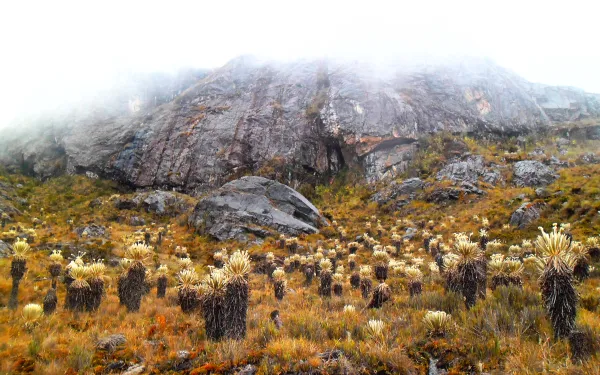
Colombia’s Constitutional Court has ruled against a controversial legal loophole permitting oil, gas and mining operations in the country’s paramos - high altitude eco-systems. Colombia’s paramos are the most extensive on earth and supply more than 70% of the country’s population with water, according to the Bogota-based Alexander von Humboldt Institute. The loophole is in a June 2015 law implementing Colombia’s “National Development Plan 2014-2018.” The law prohibits “agricultural activities” and the “exploration for or exploitation of non-renewable natural resources”, as well as the “construction of oil and gas refineries”, in paramos, but then states that mining operations which have contracts and environmental licenses dating to before 9 February 2010, or oil and gas operations with contracts and licenses dating to before 16 June 2011, are exempted. This was challenged by four congressmen, three lawyers and 12 representatives from a coalition called the Cumbre Agraria, Campesina, Étnica y Popular, who argued that the loophole violates rights to the environment, water and Colombia’s patrimony because of the impacts oil, gas and mining operations would have on the paramos’ vegetation, soil, sub-soil and water. On 8 February the court’s ruling, which was made public on Thursday, deemed three paragraphs relating to the loophole in the June 2015 law “unconstitutional” - or “inexequible” in Colombian Spanish. “Paramo eco-systems exist in very few places in the world and Colombia is privileged to be the country that has the highest number of paramos globally,” senator Alberto Castillo, one of the plaintiffs, told the Guardian.“Because of this, we believe that the absolute ban on natural resource extraction that we now have in Colombia is of great magnitude and should delight the world.” “It’s a ruling that will make history,” says senator Iván Cepeda, another plaintiff. “The court went further than we hoped, without a doubt. [Mining and oil and gas operations in the paramos] is a serious abuse against natural resources, especially the fundamental right to water.” “The court’s ruling is a major advance in environmental matters,” Viviana Tacha, another plaintiff and an adviser to senator Castillo, told the Guardian. “No doubt about it, it’s a victory for the entire country and for the communities resisting the imposition of a development model based on natural resource extraction which fails to take into account the environment and local people. Given global concern about climate change, the protection of the paramos by the court is one of the most important recent decisions on environmental matters.” According to a communiqué by the court issued on 8 February, the offending three paragraphs “ignore the constitutional duty to protect areas of special ecological importance [and] put at risk the fundamental rights of the entire population to access good quality water.” The communiqué says the court arrived at its decision after “analyzing the state’s power to intervene in the economy and its duty to protect areas of special ecological importance, weighing them up against economic freedom and the rights of individuals to exploit the state’s resources.” It concluded that, in this case, the former overrides the latter for three reasons: 1) the current lack of protection of paramos; 2) the “fundamental role” played by paramos in regulating the country’s drinking water cycle and providing cheap, high-quality water to 70% of the population; and 3) the particular vulnerability of paramos due to their “relative isolation”, low temperatures and low oxygen levels. Carlos Lozano-Acosta, from the Interamerican Association for Environmental Defense (AIDA), told the Guardian the court’s decision is “historic” and sets an example to other countries in the Andean region where there are paramos. “The paramos [in Colombia] are vital because they’re a source of drinking water for 70% of Colombians, strategic reserves of biodiversity, and carbon sequesters,” he says. “The court acknowledged all that in the sentence.” An ‘amicus brief’ sent to the court and written by Lozano-Acosta together with the Bogota-based NGO Asociación Ambiente y Sociedad (AAS) argued that the loophole contradicts Colombia’s constitution, international environmental law, and international treaties signed by Colombia, such as the United Nations Framework Convention on Climate Change, the Convention on Biological Diversity and the Ramsar Convention. NGO Dejusticia, also based in Bogota, is another civil society organisation which sent an ‘amicus brief’ to the court, calling the crucial three paragraphs an “unjustified regression” because mining, oil and gas operations in paramos had already been banned back in 2010 and 2011. “Before [the June 2015] law, such activities were prohibited,” the NGO stated in an interview in Colombian newspaper El Espectador. “This means that the current National Development Plan is a step backwards in protecting the paramos.” That “regression” was acknowledged by the court in its ruling, which described the offending paragraphs as “reestablishing the possibility” of oil, gas and mining operations in paramos despite them being “prohibited by Laws 1382 in 2010 and 1450 in 2011.” “The paramos are key ecosystems and water sources which are insufficiently protected,” Dejusticia’s Diana Rodriguez told the Guardian. “We’re thrilled the court has taken a stand for their immediate protection and sent a message that economic development cannot sacrifice respect for the environment.” Just how big an impact the court’s ruling could or will have isn’t immediately clear. How many oil, gas or mining operations stand to be affected? In its interview with El Espectador, Dejusticia stated that the National Mining Agency (NMA) believes approximately 500 mining titles covering over 140,000 hectares of the paramos have been issued, while senator Castillo told the Guardian the NMA states there are currently 448 mining titles in paramos - 347 of which have environmental licences. “Taking into account that this is official information, which the court itself recognized, other sources have no basis in speaking of lower numbers,” Castillo says. “The three companies who have most mining titles in the paramos are AngloGold Ashanti Colombia S.A., Eco Oro Minerales Corp and Leytah Colombia.” Senator Cepeda told the Guardian the 448 mining titles include 26 of Colombia’s 32 paramos and extend for more than 118,000 hectares, “more than 11,000 of which are [also] affected by four oil and gas projects.” According to one media report, Environment Minister Gabriel Vallejo has said he will request a clarification from the court and believes that “other sources” say up to 522 titles could be affected. “There are very different estimates about the number of titles and even more confusion related to how many have environmental licenses,” says Dejusticia’s Rodriguez. “Indeed, some mining companies didn’t wait for the [court’s] full ruling [and] already announced that they will forego their mining concessions in the paramos.” Another question is how far Colombia’s paramos extend. Although the court’s ruling cites a 2011 Humboldt Institute publication stating there are 1.9 million hectares in Colombia, Humboldt’s Carlos Sarmiento told the Guardian their current estimate is 2.9 million hectares - 2.5% of national territory. That 2.9 million figure is also used by the Ministry of Environment and Sustainable Development. But what if the government disagrees that certain areas really are paramos, and permits oil, gas or mining operations to take place there anyway? As the court’s ruling acknowledges, the paragraph immediately preceding the three offending paragraphs in the June 2015 law states that ultimately it is the Environment Ministry which, according to its own “technical, environmental, social and economic criteria”, is responsible for “delimiting” paramos. And that paragraph wasn’t challenged by the plaintiffs. “The court’s decision could result ineffective given that that part of Article 174 wasn’t part of the lawsuit and Congress has given the Environment Ministry the function of delimiting paramos, and in doing that the Ministry isn’t subject to the scientific criteria established by the Alexander von Humboldt Institute,” the court ruled. “It would be possible for the Ministry to not delimit paramos, or exclude from delimitation, certain areas where mining or hydrocarbon operations are happening or are going to happen. That would nullify [our] decision because such operations could take place in areas that have been scientifically classified as paramos, but the Ministry has excluded.” AIDA’s Lozano-Acosta says that risk exists “without a doubt.” “But the court also said that the government mustn’t ignore the Humboldt Institute’s technical recommendations,” he told the Guardian. For senator Castillo, that risk only exists “if the Ministry doesn’t closely read the court’s sentence or doesn’t want to comply with it.” “In the court’s words, delimitation must ensure the maximum degree of protection,” Castillo says. “This is absolutely crucial given that what the government wants to do is reduce to the utmost the extent of the paramos via a very restricted delimitation process and thereby pave the way for exploitation. Dispute will continue in the delimitation of each paramo, but we will continue in their defence and the court’s sentence gives us many tools to do so.” According to senator Cepeda, the court’s ruling will lead to a “profound discussion about how paramos are delimited.” He told the Guardian that the plaintiffs, together with environmental organisations and others, intend to ensure the government abides by the court’s ruling and “will seek the suspension of more than 400 mining titles.” AAS’s Margarita Florez says the court’s ruling cannot be appealed. “The decision is a constitutional sentence and therefore it is binding on the government and must be complied with,” she told the Guardian. “There is no way to appeal it.” The court’s ruling cites various definitions of paramos, including “the highest and most exposed regions of tropical Andean mountain ranges” and “neotropical mountains between the upper limit of forest vegetation (3,200-3,800 ms above sea level) and the lower limit of perpetual snows (4,400-4,700 ms) in Andean systems.” It quotes the Humboldt Institute describing them as “key sites that “harvest” rainfall and snow water stored in glacial lakes, bogs, marshes and peat soils” that are “held for a relatively long period of time and released constantly and slowly.”
Read moreBelo Monte hydroelectric plant is flouting agreements to protect indigenous communities as its builder seeks approval to start generating power, environmental lawyers have warned. The US$11 billion dam on an Amazonian tributary – set to be the third-largest producer of hydropower globally – has met just 30% of the social and environmental conditions set by government, said AIDA Americas. “It is clear that the conditions necessary for Norte Energia, the consortium in charge of the project, to receive the licence are not in place,” said a statement on Monday. The dam is 70% built. Brazil’s largest infrastructure work will divert the Xingu River, forcing the relocation of 2,000 families as pristine rainforest is flooded. Federal prosecutors have recommended the relocation be suspended. Environmental groups have petitioned the Inter-American Commission on Human Rights to oppose the government’s granting of a license, on the basis it could destroy tribes’ means of survival. “Giving free rein of operation to the dam at this time would mean completely shutting down the options available to avoid major social and humanitarian disasters in the region,” said Sandy Faidherb of SDDH, a local activist group which filed on behalf of the affected communities. The government has said Belo Monte will supply Brazilians with clean energy and develop the country’s economy. The dam has been designed to minimise damage, and will flood less than half – 478 sq km in 28-mini reservoirs – of the area affected by the Brazil’s largest Itaipu hydroplant, the Guardian reported. That comes at a cost to power output, as not shutting off entirely the river means the plant will work on average at barely 40% of its 11,200 MW capacity. The Xingu River basin in Para state is a “living symbol of Brazil’s cultural and biological diversity,” home to 25,000 indigenous people from 40 ethnic groups,according to Amazon Watch. Wildlife populations have drastically declined at another dam, Balbina, built in the 1980s, after a 3,500-island archipelago slashed habitat to roam and exposed the likes of tortoises and gamebirds to wind and wildfires.
Read more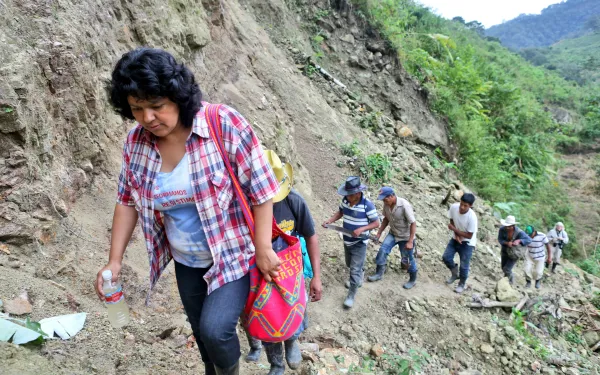
It’s been one month since the assassination of Berta Cáceres, tireless defender of the environment and human rights in Honduras. Her murder quickly gave birth to a global movement calling for justice. It has become a turning point for human rights and environmental defenders and, especially, in the fight for the rights of women and indigenous peoples in Latin America. For that, March 3 will never be forgotten. There aren’t enough words to describe adequately who Berta was, and who she will always be in our memories. She represented what it meant to be a woman, an indigenous person, an environmentalist, a mother, a daughter, a sister, a colleague and a friend. As the BBC said, she’s the Honduran woman who twisted the arm of China and the World Bank; her work led to the withdrawal of their funding for Agua Zarca, the dam Berta was so passionately fighting against. For all that she did, and all that she was, the loss of Berta has severely hurt us all. In a matter of hours, her death caused an unprecedented global outcry. Thousands of organizations, institutions and individuals from around the world have been speaking out against her murder and loudly demanding justice. Point of no return Ironically, the night Berta was murdered, I watched Selma, a film that narrates a key moment in the Civil Rights Movement. Fifty-one years ago, on March 7, 1965, a voting rights march that left Selma toward Montgomery, Alabama was violently repressed. That senseless act of violence became the catalyst for the passage of the Voting Rights Act, which aimed to overcome legal barriers that prevented African Americans from exercising their right to vote. Similarly, we must make Berta’s murder the catalyst that breaks the systematic impunity of cases like this, in Honduras and throughout the region. It’s time to ensure that our indignation, and the demands for justice and investigation made by countless organizations and international authorities, will have an impact. Like Alabama in 1965, Honduras has endured years of systematic human rights violations, linked in large part to infrastructure and mining projects. Just days before her death, Berta and COPINH, the organization she directed, reported threats received for their opposition to the Agua Zarca Dam project. It had been years since the Inter-American Commission on Human Rights first granted precautionary measures to protect Berta’s life, with which the Honduran government failed to comply. After Berta’s murder, on March 5, due to the gravity of the situation the Commission authorized precautionary measures to protect Berta’s family, her colleagues at COPINH, and Gustavo Castro, the sole witness to her death. But days later Néstor García, another member of COPINH, was also assassinated. Then, Gustavo was prevented from returning home to Mexico despite cooperating with the investigation, and despite his ability to continue doing so under the Treaty of Judicial Cooperation between Mexico and Honduras. Members of COPINH and Berta’s relatives continue to report new threats. Many international officials—including the Organization of American States, the Office of the United Nations High Commissioner for Human Rights, UN special rapporteurs, and members of the Congresses of the United States, Costa Rica and the European Union—have also demanded an objective investigation into Berta’s murder. Despite public outcry, little progress has been made thus far, evidenced by the lack of response from the Honduran government and conclusions drawn by an international observation mission. The situation in Honduras reflects the alarming reality of human rights in Latin America, particularly there and in Brazil, Colombia, Mexico and Peru. Multiple reports conclude that the region is under fire. Those who fight to protect their rights, their land, and the environment are risking their freedom, their integrity, and even their lives. Irresponsible businesses and financing Berta’s murder also underscores the responsibility of companies, financial institutions and others involved in the Agua Zarca Dam project. The project’s outright threats to the environment and human rights have been reported for many years. Those threats are the reason the World Bank and Sinohydro pulled out of the project in 2014. The FMO of Holland and Finn Fund of Finland also withdrew their support on March 16, after the assassination of Néstor García. The Central American Bank for Economic Integration (CABEI) froze funding to the project a few days ago. The situation surrounding Berta’s death clearly demonstrates one reason large dams are a bad energy solution—they create severe socioenvironmental impacts. Honduras, like the rest of Latin America, has options to produce energy in ways that truly promote development and reduce poverty. It’s time to learn from the mistakes of the past and move into the 21st century by implementing sustainable energy alternatives. The shocking loss of Berta, the uncertain situation of Gustavo and members of COPINH… it all reminds me of the words of a friend, a journalist who was driven out of his own country for what he wrote. He said that extractive industries, including large dams, are the banana republics of our century. I think he’s right. In Latin America, the uncontrolled extraction of natural resources today is akin to the reign of dictators in the 1960s. We cannot afford to let this happen again. This time will be different. What happened in Honduras must be a watershed moment—a time, finally, to enforce international standards for human rights and the environment. In Berta’s case, there must be an immediate, effective and independent investigation. It should acknowledge the responsibility of the companies involved with Agua Zarca. The hydroelectric project itself should be analyzed to find suitable alternatives. Honduras and all the States involved should implement corrective measures to ensure that what happened to Berta and Néstor does not happen again. Those of us who worked with Berta, who share her passions and principles, will continue to demand justice. Every country in the Americas needs and deserves it.
Read more
By Gladys Martínez, AIDA senior attorney During Semana Santa, my family and I visited the Las Baulas National Marine Park in Guanacaste, Costa Rica. A clearly committed park ranger there told us about the threats sea turtles face when they spawn on the coast, and of the importance of protecting the beaches and avoiding poorly built development projects. But what most caught my attention was the curiosity of my two children, ages three and five, asking how far the turtles had to swim to lay their eggs. “If they get lost, do the baby turtles not get born?” they asked. For most of us, the answer to their question is a mystery. And from that mystery comes the importance of protecting life in the high seas, those international waters that belong to no country and are therefore part of the global commons. What happens in the high seas, far past what we can see and care for from the coast, motivates the 33 NGOS and 193 delegations of the United Nations currently meeting in New York. Over the course of two weeks, they’re working to create a legally binding agreement that conserves marine life in areas beyond any national jurisdiction. The agreement will be implemented under the United Nations Convention on the Law of the Sea (UNCLOS). AIDA is the only NGO from Latin America that is present at the First Session of the Preparatory Committee, which seeks to create the new treaty within two years. As part of the High Seas Alliance, and with support from the Pew Charitable Trusts, we are working to bring the voice of Latin American civil society to the negotiations. Alongside other member organizations of the High Seas Alliance, we are advocating for the new treaty to include the following principles: Protection and preservation of the marine environment of the high seas. Cooperation between States to conserve the living resources of the high seas. Use of the best available scientific information in decision-making. Good management of high seas resources, guaranteeing them for present and future generations. Implementation of the precautionary principle, according to which the absence of information cannot constitute an excuse for the failure to protect the ecosystems of the high seas. Management based on large-scale planning that takes into account the interrelation of marine biodiversity. Sustainability and equity in reference to the possibility of using resources to meet the needs of present generations, while protecting the needs of future generations. Special attention should be given to the interests of and benefits to developing countries. Good governance (transparency, public participation and access to review procedures and resources). “Polluter pays,” a principle that implies that States causing pollution must take responsibility for it. Compliance with and respect for the commitments made under UNCLOS. Additionally, we consider it of vital importance that States establish marine protected areas, beyond national jurisdictions, to guarantee the conservation of marine biodiversity. At AIDA, we look with great hope and enthusiasm for the commitments of the States during this first leg of the long road ahead. We know that after these two years of negotiations, we will successfully emerge with a treaty that protects the marine biodiversity that belongs to us all—that rich life that lives in the greatest part of our seas. Thank you for supporting us as we continue to work towards this goal!
Read more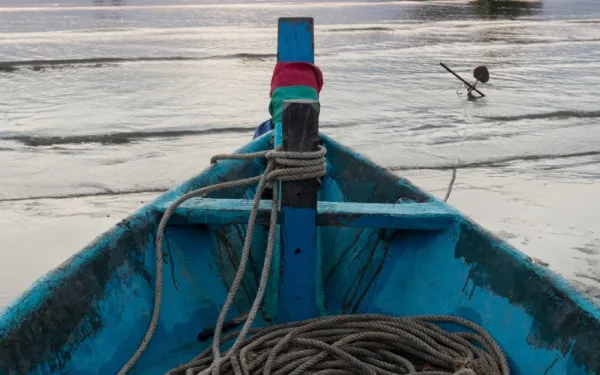
This Spanish-language guide provides specific legal, scientific and economic tools to more sustainably manage our marine and coastal resources.
Read more
The report review the institutional, legislative, and regulatory frameworks, as well as existing government programs related to the control and monitoring of SLCPs in Brazil, Chile and Mexico.
Read more
Mexico consumes 12 percent of the global volume of bottled water, highlighting the failures of the country’s water supply system and the violation of a basic human right. Nobody should be denied a glass of water. Serving your guests water is polite; it shows you have good manners and empathy for others. It is also, though not quite as obvious, an issue of human rights. In Mexico’s capital, until only recently, restaurants could deny a glass of water to their customers and require them to drink only bottled water. On one occasion, the owner of a gourmet pizzeria reacted furiously when she saw my boyfriend take out his own water bottle to take a pill. She told him it was prohibited to bring outside food and drink into her restaurant. Then, when we asked for a glass of water, she responded angrily: “We don’t give water away here, we sell it in bottles.” A circular business What you find being sold in supermarkets is not the water, but the bottle. In Mexico, the cost of the extraction and supply of water is relatively low, since almost the entire service is subsidized. According to the highest available rate, a glass of water costs seven cents (.007 Mexican pesos). For a bottle with the same quantity of water, the pizzeria charged $1.50 (28 pesos), seven times the supermarket price. The incident in the pizzeria occurred after the Legislative Assembly of Mexico City required food establishments to provide free glasses of water to customers who ask for it. But even after the legislative provision, I have often had to clarify that I want a glass of water, not a bottle. The waiters often warn me, “It’s filtered water,” reminding me of its unreliability. The dynamic behind this type of business has changed: they now buy large jugs of bottled water or spend money on filters, because in Mexico it’s well known that you never drink water directly from the tap. It’s an unspoken secret, almost popular belief, that tap water is dirty water. It’s common that even those of us who don’t buy bottled water have a filter in our homes. This belief emerged from the 1985 earthquake, when various pipes broke and drinking water mixed with sewage. Later, during a cholera epidemic in the 1990’s, the government promoted chlorinating or boiling the tap water. Yet no authority was responsible for the quality of the pipes through which the drinking water ran; water which, by definition, should be fit for human consumption. In contrast, Chile promotes three reliable water sources: chlorinated, boiled or taken from the tap. In Mexico, the health threat coincided with the arrival of bottled water. What the companies promoted in those early years was confidence and security in the quality of their water. So, little by little, we went from boiling and chlorinating our water, to buying it in 20-liter jugs, to buying small plastic bottles that hold less than 250 ml of water. According to the International Bottled Water Association (IBWA), in 2014 Mexicans consumed 253 liters of bottled water per person. This compares to 94.3 liters per person in Europe (where public drinking fountains are commonplace) and 37 liters per person globally. Mexico consumes 12 percent of the world’s total volume of bottled water. The World Bank cites 80 percent of the Mexican population as distrustful of the water supply system. Bottled water companies, then, have nothing but room to grow, especially considering the majority of the population doesn’t yet consume the recommended two liters of water per day. And a large quantity of bottled water is used on daily tasks such as cooking and washing dishes, even on bathing newborn babies. Can you or can’t you drink tap water? The answer is: It depends. The responsibility for water supply in Mexico is so fractioned that it’s impossible to get a convincing response. In the capital city, water quality is disclosed each year and in only two neighborhoods does it not meet standards for human consumption. Unfortunately, those with the worst water quality also have the lowest standard of living. Information on the subject doesn’t arrive to our homes, it’s difficult to access and – in some cases – the information is non-existent, hidden or disguised. No government authority is responsible for water quality: not the National Water Commission, not state or city governments. Violating a human right Without convincing responses about the reliability of the water supply system, Mexicans are opting to buy bottled water. By doing so, we’re demonstrating that something is wrong with the country’s water system, and the human right to water is not guaranteed. According to the UN, drinking water must be safe, clean accessible and affordable for all. The human right to water was included in the Mexican Constitution four years ago, but its implementation, and the party responsible for guaranteeing it, remains under discussion. While the debate continues, millions of Mexicans are, understandably, buying bottled water to protect their health. The lack of information about or accountability for the water supply system makes the guarantee of this human right nothing more than a dream. The UN established that people shouldn’t spend more than three percent of their income on water services. In Mexico, only those with incomes greater than $1,200 a month (21,000 pesos) spend three percent or less of their income on bottled water. The other 80 percent of households in the country spend as much as eight percent, a staggering figure, especially considering it doesn’t include what they pay for water used for other domestic activities. People are buying bottled water because they don’t trust the country’s water supply system. By denying a glass of water to its population, the Mexican government is denying a fundamental human right.
Read more